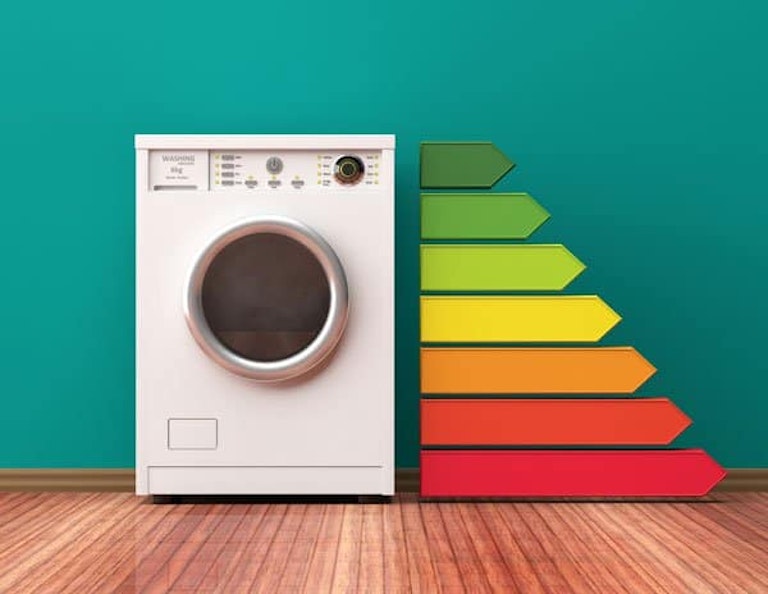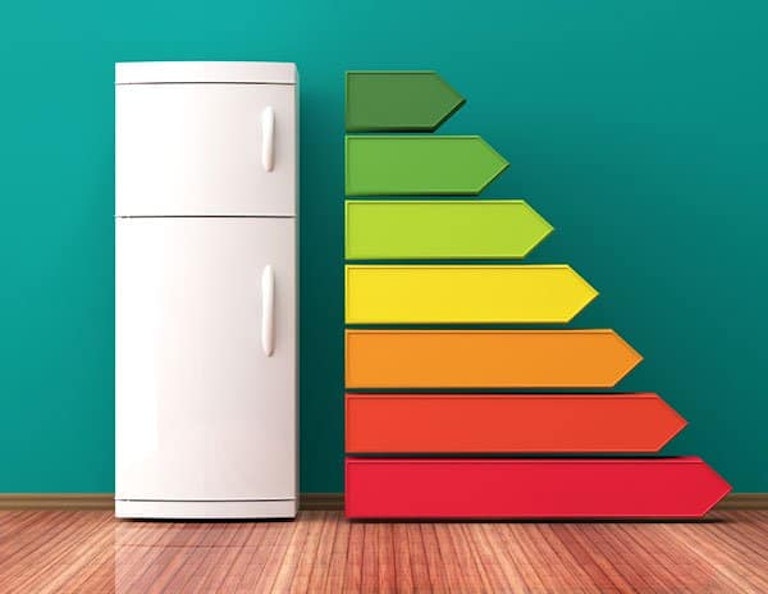How Much Power Do Your Appliances Use?
These figures are approximate representations, and the actual power consumption of your appliances may vary substantially from these figures. Check the power tags, or better yet, measure the amperage draw with a clamp-on ammeter or home energy monitor like a Kill-A-Watt meter. You can usually find ammeters and Kill-A-Watt meters at your local hardware store or online. Multiply the hours used on the average day by the wattage listed below. This will give you the watt-hours consumed per day.
Remember that some items, such as garage door openers, are used only for a fraction of an hour or minute per day. A 300-watt item used for 5 minutes per day will only consume 25-watt hours per day. Where a range of numbers is given, the lower figure often denotes a technologically newer and more efficient model. The letters “NA” denote appliances that would normally be powered by non-electric sources in a PV powered home. If you are considering making your own power, we strongly suggest that you invest in a true RMS digital multimeter, a clamp-on type ammeter or a Kill-A-Watt meter. It actually makes sense to know where your power is being used even if you are not producing it, and if you are, these meters are essential diagnostic tools.
Ready to start your Do-it-Your-Way Solar journey?
How much money can you save by going solar?

Appliance Consumption Table
|
Watts
|
Appliance
|
Watts
|
Appliance
|
Watts
|
|
|
Kitchen
|
Living Room
|
Tools | |||
|
Blender
|
500
|
Bluray Player |
15
|
Band Saw – 14″ |
1100
|
|
Can Opener
|
150
|
Cable Box
|
35
|
Belt Sander – 3″ |
1000
|
|
Coffee Machine
|
1000
|
DVD Player |
15
|
Chain Saw – 12″ |
1100
|
|
Dishwasher
|
1200-1500
|
TV – LCD
|
150
|
Circular Saw – 7-1/4″ |
900
|
|
Espresso Machine
|
800
|
TV – Plasma
|
200
|
Circular Saw 8-1/4″ |
1400
|
|
Freezer – Upright – 15 cu. ft.
|
1240 Wh/Day**
|
Satellite Dish
|
25
|
Disc Sander – 9″ |
1200
|
|
Freezer – Chest – 15 cu. ft.
|
1080 Wh/Day**
|
Stereo Receiver |
450
|
Drill – 1/4″ |
250
|
|
Fridge – 20 cu. ft. (AC)
|
1411 Wh/day**
|
Video Game Console
|
150
|
Drill – 1/2″ |
750
|
|
Fridge -16 cu. ft. (AC)
|
1200 Wh/day**
|
Lights
|
Drill – 1″ |
1000
|
|
| Garbage Disposal |
450
|
CFL Bulb – 40 Watt Equivalent
|
11
|
Hedge Trimmer |
450
|
|
Kettle – Electric
|
1200
|
CFL Bulb – 60 Watt Equivalent
|
18
|
Weed Eater |
500
|
|
Microwave
|
1000
|
CFL Bulb – 75 Watt Equivalent
|
20
|
Misc. | |
| Oven – Electric |
1200
|
CFL Bulb – 100 Watt Equivalent
|
30
|
Clock Radio |
7
|
|
Toaster
|
850
|
Compact Fluorescent 20 Watt
|
22
|
Curling Iron |
150
|
| Toaster Oven |
1200
|
Compact Fluorescent 25 Watt
|
28
|
Dehumidifier |
280
|
| Stand Mixer |
300
|
Halogen – 40 Watt
|
40
|
Electric Shaver |
15
|
|
Heating/Cooling
|
|
Incandescent 50 Watt
|
50
|
Electric Blanket |
200
|
|
Box Fan
|
200
|
Incandescent 100 Watt |
100
|
Hair Dryer |
1500
|
|
Ceiling Fan
|
120
|
LED Bulb – 40 Watt Equivalent |
10
|
Humidifier |
200
|
|
Central Air Conditioner – 24,000 BTU NA
|
3800
|
LED Bulb – 60 Watt Equivalent
|
13
|
Radiotelephone – Receive
|
5
|
|
Central Air Conditioner – 10,000 BTU NA
|
3250
|
LED Bulb – 75 watt equivalent
|
18
|
Radiotelephone – Transmit
|
75
|
|
Furnace Fan Blower
|
800
|
LED Bulb – 100 Watt Equivalent |
23
|
Sewing Machine
|
100
|
|
Space Heater NA
|
1500
|
Office |
Vacuum
|
1000
|
|
|
Tankless Water Heater – Electric
|
18000
|
Desktop Computer (Standard) |
200
|
Note: TVs, Computers, and other devices left plugged in but not turned on still draw power.
**To estimate the number of hours that a refrigerator actually operates at its maximum wattage, divide the total time the refrigerator is plugged in by three. Refrigerators, although turned “on” all the time, actually cycle on and off as needed to maintain interior temperatures. |
|
| Water Heater – Electric | 4500 | Desktop Computer (Gaming) | 500 | ||
| Window Air Conditioner 10,000 BTU NA | 900 | Laptop | 100 | ||
|
Window Air Conditioner 12,000 BTU NA
|
3250
|
LCD Monitor
|
100
|
||
|
Well Pump – 1/3 1HP
|
750
|
Modem
|
7
|
||
|
Laundry
|
Paper Shredder |
150
|
|||
|
Clothes Dryer – Electric
|
3000
|
Printer |
100
|
||
|
Clothes Dryer – Gas
|
1800
|
Router
|
7
|
||
|
Clothes Washer
|
800
|
Smart Phone – Recharge |
6
|
||
| Iron |
1200
|
Tablet – Recharge |
8
|
||
* The daily energy values listed here are for the most efficient units in their class and the information was obtained from Consumer Guide to Home and the General Electric website.
Use this table with our Load Evaluation Calculator
to find out how many kWhyour appliances would use per month.

Energy Star Appliances
The laundry area and kitchen of the modern house contain the biggest users of electricity. If energy is conserved and use of Energy Star appliances is maximized, your home is well on the way to becoming an example of independent living. Click here for a list of how much power each appliance uses.
Consider your appliances and how you use them. In general, side-load washers use less energy than top-load washers.
Many food preparations can be done without electricity, and meals can be cooked alternatively with a Dutch oven, pressure cooker, or toaster oven, and three dishes baking at once save the cook’s time and conserve energy too.
Energy Efficient Refrigerators
Refrigerators are infamous for using way too much energy. If your existing refrigerator is over 10 years old, replace it with a new energy efficient refrigerator. Newer models are much more energy efficient than the old avocado green refrigerator at grandma’s house. New refrigerators don’t have to be expensive to be efficient. Check the Energy Guide stickers as well as the price tags. And last but not least, consider a smaller unit because, with refrigerators, bigger is not better.
If replacing your old unit with a modern high efficiency model is not an option, keep your old fridge tuned up by cleaning the ventilation grilles and giving it some room from the wall to allow for ventilation. Use the energy saving feature, if available, or set the thermostat to the minimum requirement of 38 degrees. Keep your freezer as full as possible. Use plastic bottles filled with water for empty spaces.

